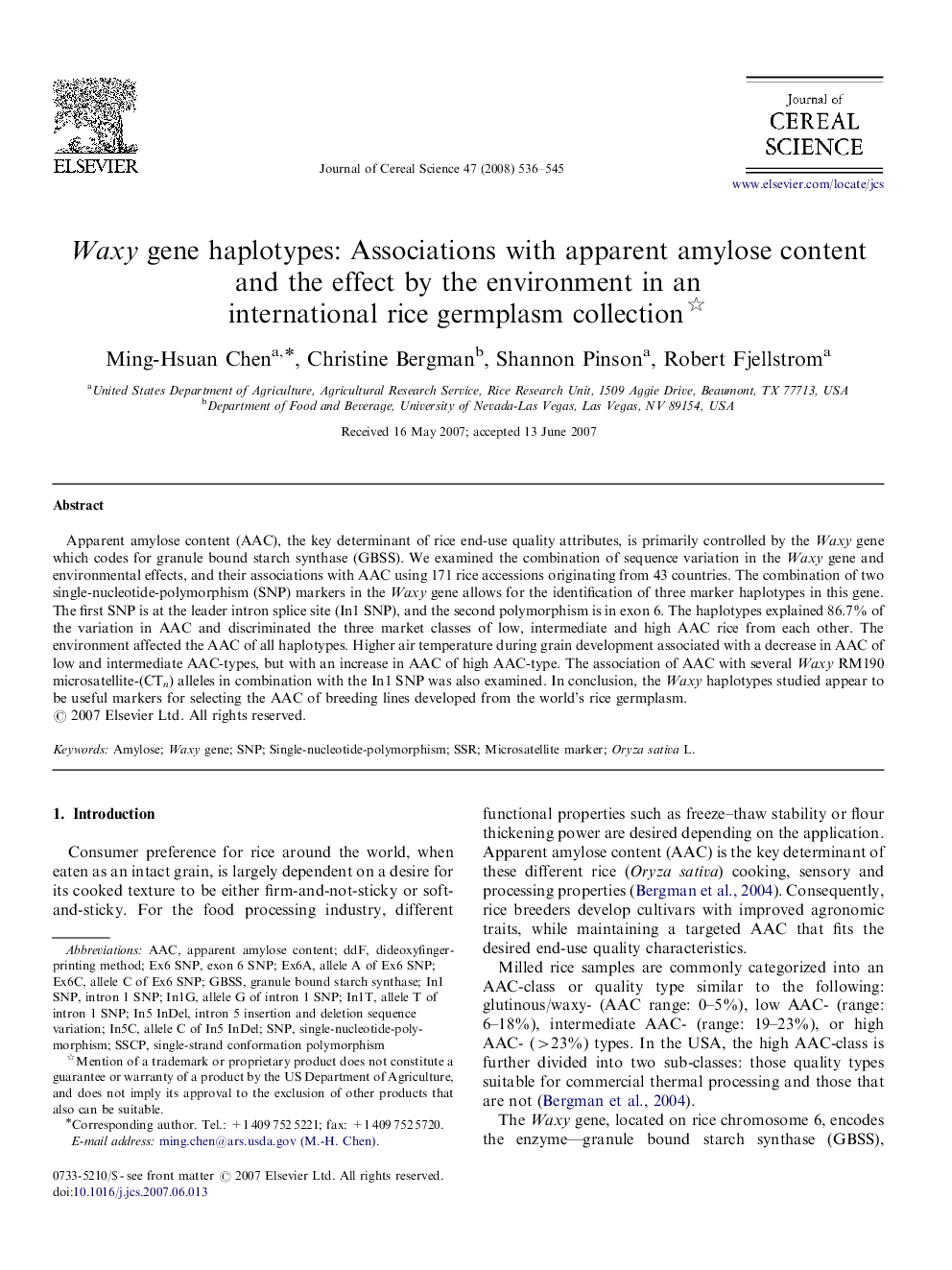| Article ID | Journal | Published Year | Pages | File Type |
|---|---|---|---|---|
| 4516579 | Journal of Cereal Science | 2008 | 10 Pages |
Apparent amylose content (AAC), the key determinant of rice end-use quality attributes, is primarily controlled by the Waxy gene which codes for granule bound starch synthase (GBSS). We examined the combination of sequence variation in the Waxy gene and environmental effects, and their associations with AAC using 171 rice accessions originating from 43 countries. The combination of two single-nucleotide-polymorphism (SNP) markers in the Waxy gene allows for the identification of three marker haplotypes in this gene. The first SNP is at the leader intron splice site (In1 SNP), and the second polymorphism is in exon 6. The haplotypes explained 86.7% of the variation in AAC and discriminated the three market classes of low, intermediate and high AAC rice from each other. The environment affected the AAC of all haplotypes. Higher air temperature during grain development associated with a decrease in AAC of low and intermediate AAC-types, but with an increase in AAC of high AAC-type. The association of AAC with several Waxy RM190 microsatellite-(CTn) alleles in combination with the In1 SNP was also examined. In conclusion, the Waxy haplotypes studied appear to be useful markers for selecting the AAC of breeding lines developed from the world's rice germplasm.
